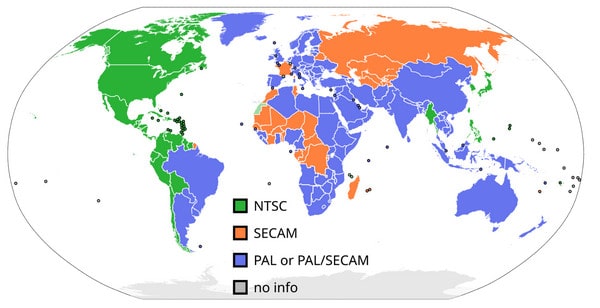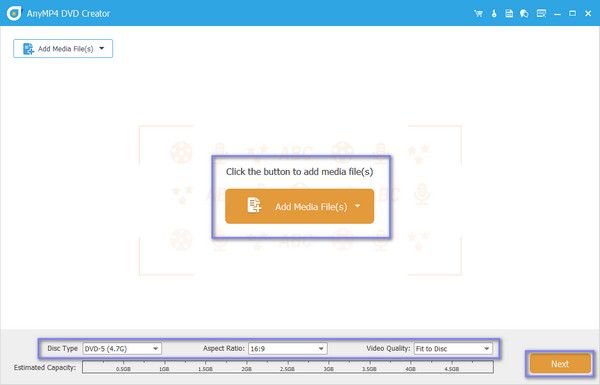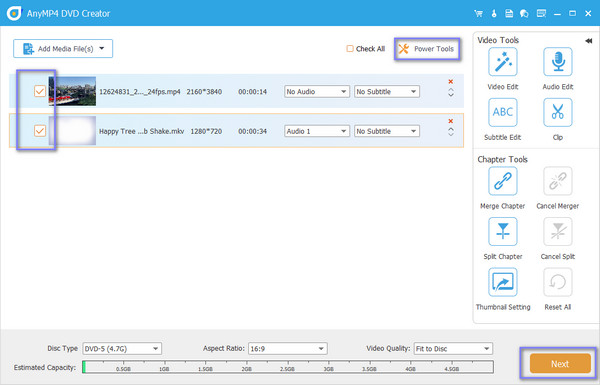What is NTSC about? Most people have never listened to this term. If you are a fan of television and DVD technology, you may heard about it but just scratch the surface of it. However, more people don't know it. This article will introduce the NTSC standard to help you know it more clearly.

NTSC, shorts for the National Television System Committee, is an analog color-encoding video system that was utilized in North American television broadcasts, as well as in DVD players. Color television began to overtake black-and-white television in the 1950s, rendering the earlier technical standard outdated. The various color encoding techniques used by American broadcasting organizations at the time were incompatible with one another. Only in 1953 did the National Television System Committee introduce a new TV standard known as "NTSC." This format was created to work with the majority of TV sets in the nation, whether they are color or black-and-white. Despite switching to digital, contemporary television broadcasters continue to employ the same number of resolution lines and frame rates as defined by the NTSC system.

PAL is another analog color television visual mode system that Blu-ray and DVD devices also utilize. The PAL format was created in Germany in the late 1950s to address some of NTSC's shortcomings, such as signal instability in inclement weather, which was particularly important for European broadcasters. Reversing every other line in a TV transmission to fix the issue and get rid of faults was the new norm. Additionally, PAL supplied the 50 Hz picture frequency that was needed locally. In contrast to NTSC, this format is still used for broadcasting in the nations where it was implemented.
So, what are the differences between NTSC and PAL?
• Distribution areas
| Area | |
|---|---|
| NTSC | Most of the Americas, Myanmar, South Korea, Taiwan, Philippines, Japan, and some Pacific Islands nations and territories. |
| PAL | most European countries, several African countries, Argentina, Brazil, Paraguay, Uruguay, and most of Asia Pacific. |
• Color encoding
NTSC receivers have color adjustment for tints by hand. More NTSC saturation increases the visibility of off-hue colors. Several changes must be made manually. PAL controls color on its own. Hue mistakes are eliminated through the use of color signal phase alteration. Actually, PAL removes chrominance phase errors.
• Picture quality
PAL lines emit 25 alternating lines at a rate of 50 fields per second. PAL TVs provide 25 frames per second, which speeds up the motion display. When comparing NTSC and PAL video, PAL has fewer frames per second, but it also has more lines. NTSC TV broadcasts have 525 lines of resolution, while PAL TV broadcasts have 625. More lines indicate greater visual information and higher picture quality and resolution.
• FPS
Another distinction between the two formats is the FPS (frames per second) rate, which is 25 for PAL and 29.97 for NTSC.
• The number of resolution lines
The quantity of resolution lines used by each format is another significant distinction between PAL and NTSC. Of the 525 lines that NTSC provides, 480 are visible (480i). There are 625 lines for PAL, of which 576 are viewable (576i). For PAL, each line has the color information phase inverted. This reversal leads to a higher-fidelity image by automatically correcting phase faults in the signal transfer. However, this technique results in a loss of some vertical color sharpness, and colors on subsequent lines sometimes blend.
OK, the above is the complete information about NTSC. Then, we want to introduce you to the DVD burning software to burn videos to NTSC DVDs.
You have known more about the NTSC standard. Further, we want to give you a bonus: you can use the DVD burner to convert videos to NTSC DVDs to watch them in the areas utilizing the NTSC standard. Here is a recommended powerful DVD-burning tool.
AnyMP4 DVD Creator is a reliable DVD burner that has more than 15 years of experience. It provides an NTSC standard that you can create an NTSC DVD. Further, it supports almost all common video formats, including MP4, WMV, MOV, M4V, VOB, MPG, and more. It can burn videos to 3 modes, disc, ISO, and folder, which you can choose according to your needs. You can use the provided editing tools to adjust video effects, like sizes, subtitles, etc.
In addition, it has a clear and user-friendly interface. It provides various menu templates, including holiday, wedding, and other styles. You can also customize the menus' thumbnails, buttons, frames, and text. With the GPU acceleration technology, it offers you rocket-fast DVD-burning speed. Follow us to see the detailed steps.
1. Download and install it on your Windows or Mac computer.
Don't worry - we tried it. This download is safe, and no other software packages and ads.
Secure Download
Secure Download
Launch AnyMP4 DVD Creator on your computer and choose DVD Disc.
Please note that insert a blank DVD to your optical drive.

2. Click Add Media Files to input one or more video files. Then, choose the Disc Type you want to burn in the bottom settings.
You can also set the Aspect Ratio to change video size and Video Quality to adjust video quality level. Then, click Next to choose the template.

Tip: Check one or more videos you want to burn together. You can click the top right Power Tools option to choose different tools to edit videos.

3. You can set the template in two methods: choose one provided template that you can click to preview the effects, and select Custom Template to add your personal template. After that, click the Burn button to continue.
You can also add background music, change the background, and add an opening film.

4. Proceed to set the Folder path, Burning settings, and Playback mode. For burning settings, select TV Standard as the NTSC option. Lastly, you can click Start to begin the burning process.
We really want to commend the back button on each step, which allows us to return to the last step to adjust the settings if needed.

You have been clear about the operation of burning NTSC DVDs with this powerful tool. It allows you to merge several videos and burn them into a DVD disc. You can use its free trial to evaluate its effects!
Is NTSC still used?
There are at least four different digital television standards in use worldwide, and the majority of nations that utilize the NTSC standard and other analog television standards have either adopted or are in the process of adopting newer digital television standards.
Can I play NTSC on my DVD player?
NTSC DVDs can be played by the majority of contemporary DVD players, including many small, portable models. So will the majority of modern TVs, though you might need to access the menu system and choose the NTSC option.
Should I burn the DVD in NTSC or PAL?
The quality of PAL is superior to that of NTSC. NTSC has 525 lines of resolution, while PAL has 625 lines. Better quality and higher resolution are associated with more scan lines. A PAL DVD should appear noticeably better than a comparable NTSC DVD, all other things being equal.
In this article, you learn detailed information about the NTSC standard. Additionally, we introduce how to create NTSC DVDs with the AnyMP4 DVD Creator. If you are interested in it, you can try it!
You are welcome to rate this article and comment on us!